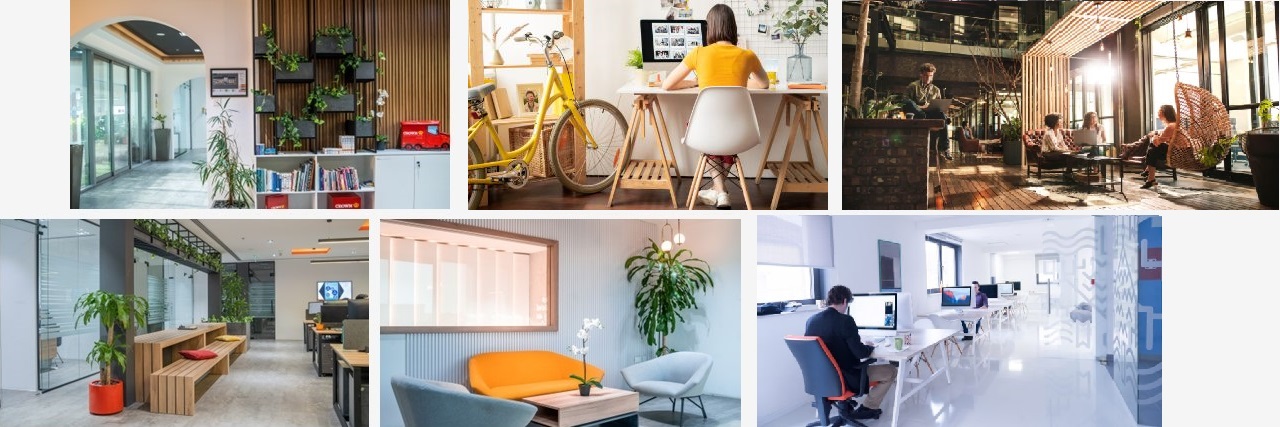Cost-Effective Strategies for Workplace Transformation
Workplace transformation refers to the process of reimagining and redesigning the physical and virtual work environment to meet the changing needs of businesses and employees. It involves implementing new technologies, adopting flexible work arrangements, optimizing space and resources, streamlining processes and workflows, and creating a sustainable workplace.
In today’s fast-paced and competitive business landscape, workplace transformation has become increasingly important for organizations to stay relevant and thrive.
The traditional office setup is no longer sufficient to support the evolving needs of businesses. With advancements in technology and changing employee expectations, organizations need to adapt and transform their workplaces to foster collaboration, innovation, and productivity. Workplace transformation is not just about making cosmetic changes to the office layout; it is about creating an environment that enables employees to work smarter, not harder.

Understanding the Importance of Cost-Effective Strategies
Cost-effective strategies are vital for workplace transformation as they ensure that organizations can achieve their goals within budget constraints. These strategies help optimize resources and make the most out of investments.
By identifying cost-effective solutions and utilizing technology, organizations can implement impactful changes without overspending.
Additionally, these strategies aid in efficient resource allocation by identifying areas for cost reduction, allowing organizations to redirect resources towards growth and innovation initiatives. This maximizes return on investment and fosters long-term sustainability.
Identifying the Key Areas for Workplace Transformation
Identifying the key areas for workplace transformation is crucial for organizations to prioritize their efforts and resources effectively. While every organization is unique, there are some common areas that most organizations should consider when undergoing workplace transformation.
One key area for workplace transformation is technology. Organizations need to leverage technology solutions to enable remote work, enhance collaboration, and streamline processes. By investing in the right technology tools and platforms, organizations can create a digital workplace that supports flexible work arrangements and improves productivity.
Another key area for workplace transformation is space optimization. With the rise of remote work and flexible work arrangements, organizations need to rethink how they use their physical space. By optimizing the layout and office interior design, organizations can create a more collaborative and productive environment.
Additionally, organizations should focus on streamlining processes and workflows. By identifying bottlenecks and inefficiencies in their current processes, organizations can implement changes that improve efficiency and reduce costs. This could involve automating repetitive tasks, implementing project management tools, or reorganizing teams to improve communication and collaboration.
-
Leverage Technology
-
Flexible Work Arrangement
-
Use of Space
-
Streamline Workflow

1. Leveraging Technology for Cost-Effective Transformation
Technology is essential for cost-effective workplace transformation. Cloud-based tools and platforms can help organizations achieve their goals while minimizing costs by providing remote access to software and data, eliminating the need for expensive on-premises infrastructure.
Virtual meeting tools enable remote collaboration, saving time, and money, and reducing carbon footprint. Automation tools streamline processes, freeing up employees’ time for strategic activities, enhancing efficiency, and productivity.

2. Implementing Flexible Work Arrangements to Reduce Costs
Flexible work arrangements are crucial for cost-effective workplace transformation. They enable employees to work remotely or have flexible schedules, reducing expenses related to office space, utilities, and commuting.
Implementing flexible work arrangements can significantly reduce real estate costs. Organizations can downsize office space or transition to shared workspaces as remote work becomes more common. This decreases rent and utilities expenses, freeing up resources for other initiatives.
Moreover, flexible work arrangements cut commuting costs by allowing employees to work from home or choose their own hours. This saves time and money for employees while reducing traffic congestion and carbon emissions. These arrangements boost employee satisfaction and retention by offering flexibility in work location and schedule. This attracts top talent, enhances employee engagement, increases productivity, and lowers turnover costs.

3. Optimizing the Use of Space and Resources
Optimizing the use of space and resources with office fit-out services is essential for cost-effective workplace transformation. By making the most out of existing resources, organizations can reduce costs and improve efficiency.
One strategy for optimizing space is implementing hot-desking or activity-based working. Instead of assigning each employee a dedicated desk, organizations can create shared workspaces where employees can choose where they want to work based on their tasks for the day. This not only reduces the amount of office space required but also promotes collaboration and flexibility.
Another strategy for optimizing resources is implementing a resource booking system. By allowing employees to book meeting rooms, equipment, or other resources online, organizations can ensure that resources are used efficiently and avoid unnecessary duplication or waste.
Furthermore, organizations can optimize the use of technology resources by implementing a centralized IT management system. This allows organizations to track software licenses, hardware inventory, and other IT assets more effectively, reducing costs associated with unnecessary purchases or maintenance.

4. Streamlining Processes and Workflows for Efficiency
Streamlining processes and workflows is essential for cost-effective workplace transformation. By identifying bottlenecks and inefficiencies, organizations can implement changes to enhance efficiency and lower costs.
One effective strategy is workflow automation, which reduces errors, improves efficiency, and allows employees to focus on strategic tasks, ultimately boosting satisfaction and productivity. Utilizing project management tools enhances communication, collaboration, and ensures timely project completion within budget, reducing the risk of costly delays or errors.
Moreover, implementing lean principles helps eliminate waste and improves efficiency, leading to reduced costs and enhanced productivity across the organization.
Creating a Sustainable Workplace for Long-Term Savings
Creating a sustainable workplace is essential for long-term cost savings. By implementing environmentally friendly practices, organizations can reduce energy consumption, waste generation, and operating costs.
One strategy for creating a sustainable workplace is implementing energy-efficient technologies. By using energy-efficient lighting, heating, and cooling systems, organizations can reduce their energy consumption and lower utility bills. Additionally, organizations can encourage employees to turn off lights and equipment when not in use and promote energy-saving habits.
Another strategy for creating a sustainable workplace is implementing waste reduction and recycling programs. By encouraging employees to recycle paper, plastic, and other materials, organizations can reduce waste generation and disposal costs. Additionally, organizations can implement digital document management systems to reduce paper usage and storage costs.
Furthermore, organizations can promote sustainable transportation options. By providing incentives for employees to use public transportation or carpool, organizations can reduce the number of cars on the road and decrease carbon emissions. This not only reduces costs associated with parking and commuting but also improves air quality and employee well-being.

Measuring and Evaluating the Effectiveness of Transformation Strategies
Measuring and evaluating the effectiveness of transformation strategies is crucial for organizations to ensure that their efforts are yielding the desired results. By tracking key metrics and analyzing data, organizations can identify areas for improvement and make informed decisions.
One important metric for measuring the effectiveness of workplace transformation strategies is employee satisfaction. By conducting regular surveys or feedback sessions, organizations can gauge how satisfied employees are with the changes implemented. This not only helps organizations identify areas for improvement but also allows them to make adjustments to ensure that employees are engaged and productive.
Another metric for measuring effectiveness is productivity. By tracking key performance indicators (KPIs) related to productivity, organizations can assess whether the changes implemented have had a positive impact on employee output. This could include metrics such as sales revenue, customer satisfaction ratings, or project completion rates.
Furthermore, organizations should track financial metrics to evaluate the cost-effectiveness of transformation strategies. This could include metrics such as cost savings, return on investment (ROI), or cost per employee. By comparing these metrics before and after implementing workplace transformation strategies, organizations can assess whether the changes have resulted in tangible financial benefits.
Next Steps for Workplace Transformation
Workplace transformation is essential for organizations to stay competitive in today’s business landscape.
The next steps for workplace transformation involve taking action. Organizations should assess their current workplace environment, identify areas for improvement, and develop a comprehensive plan for transformation.
This plan should include specific goals, timelines, and resource allocation. Organizations should involve employees in the transformation process.
By soliciting feedback and involving employees in decision-making, organizations can ensure that the changes implemented align with their needs and preferences. This not only improves employee buy-in but also increases the likelihood of successful implementation.
Workplace transformation is not a one-time event but an ongoing process. As technology advances and employee expectations evolve, organizations need to continuously adapt and transform their workplaces to stay ahead. By embracing workplace transformation and implementing cost-effective strategies, organizations can create an environment that fosters collaboration, innovation, and productivity.
Find this content helpful. Get in touch with our team of experts now!
Related stories
Whether it be storage for a relocation, security, safety, or even decluttering to create space, ensure you’re asking the right questions about your commercial storage.
Discover how Crown Worldwide Group is reducing carbon emissions by powering its UAE vehicle fleet with locally sourced biofuels. Learn about the partnership with Neutral Fuels and the positive impact on sustainability.
Unlock the potential of your workspace with Crown Workspace UAE. Discover innovative solutions to optimize office space, boost productivity, and save costs. Let us tailor a dynamic environment that empowers your team and drives success.























